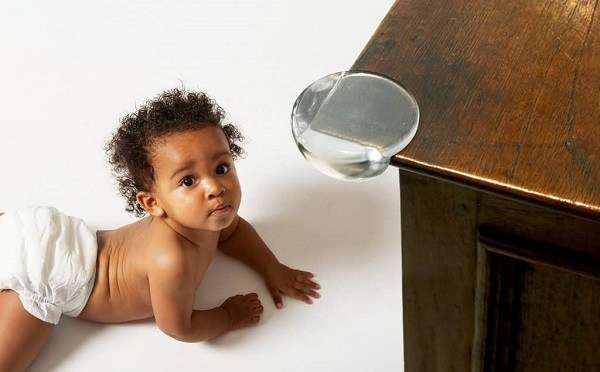Bringing a baby into your home is a joyous occasion, but it also comes with the immense responsibility of ensuring their safety. Babyproofing your home is a crucial step in creating a secure environment where your little one can explore and grow without unnecessary risks. This article aims to provide comprehensive tips and guidelines for babyproofing every corner of your home, making it a safe haven for your child.
Understanding the Basics of Babyproofing
What is Babyproofing?
Babyproofing involves taking specific measures to reduce the risk of injuries to babies and young children in the home. This includes securing furniture, covering electrical outlets, locking cabinets, and more. The goal is to anticipate potential hazards and eliminate them before they can cause harm.
Why is Babyproofing Necessary?
Accidents in the home are a leading cause of injuries among children. Babyproofing is essential because young children are naturally curious and lack the ability to recognize danger. By proactively babyproofing, parents can prevent common accidents such as falls, burns, poisoning, and choking.
When Should You Start Babyproofing?
It’s never too early to start babyproofing your home. Ideally, parents should begin before the baby is born or as soon as the baby starts showing signs of mobility. Early babyproofing ensures that your home is ready as your child begins to explore their surroundings.
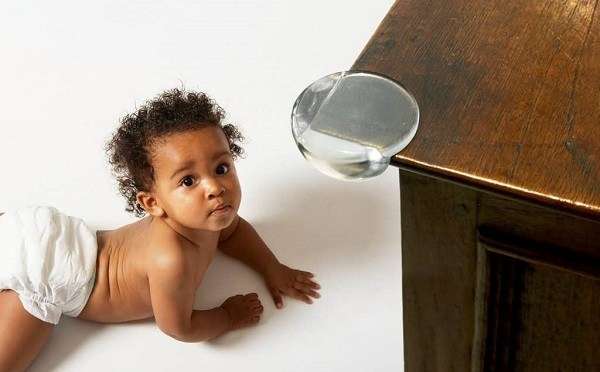
General Babyproofing Tips
Conducting a Home Safety Audit
The first step in babyproofing is conducting a thorough safety audit of your home. Walk through each room and identify potential hazards. Look for sharp edges, small objects, unstable furniture, and other risks. Make a checklist of the areas that need attention.
Prioritizing High-Risk Areas
Focus on high-risk areas where your baby spends the most time. These typically include the living room, kitchen, bathroom, and nursery. Addressing the most dangerous spots first ensures that you cover the most critical aspects of babyproofing early on.
Involving All Caregivers in Babyproofing
Babyproofing is a team effort. Make sure all caregivers, including grandparents, babysitters, and older siblings, are aware of the safety measures in place. Consistent practices across all caregivers reduce the risk of accidents.
Room-by-Room Babyproofing Guide
Living Room
Securing Furniture and TVs
Unsecured furniture and TVs can easily tip over and cause serious injuries. Anchor heavy furniture, such as bookshelves and dressers, to the wall. Use anti-tip straps for televisions to keep them stable.
Covering Electrical Outlets
Electrical outlets are a major hazard for curious babies. Use outlet covers or plug protectors to prevent little fingers from inserting objects into the sockets. Choose covers that are difficult for children to remove but easy for adults to access.
Removing Small Objects
Babies love to put things in their mouths, making small objects a choking hazard. Keep items like coins, buttons, and small toys out of reach. Regularly inspect the floor and low surfaces for anything that could be dangerous.
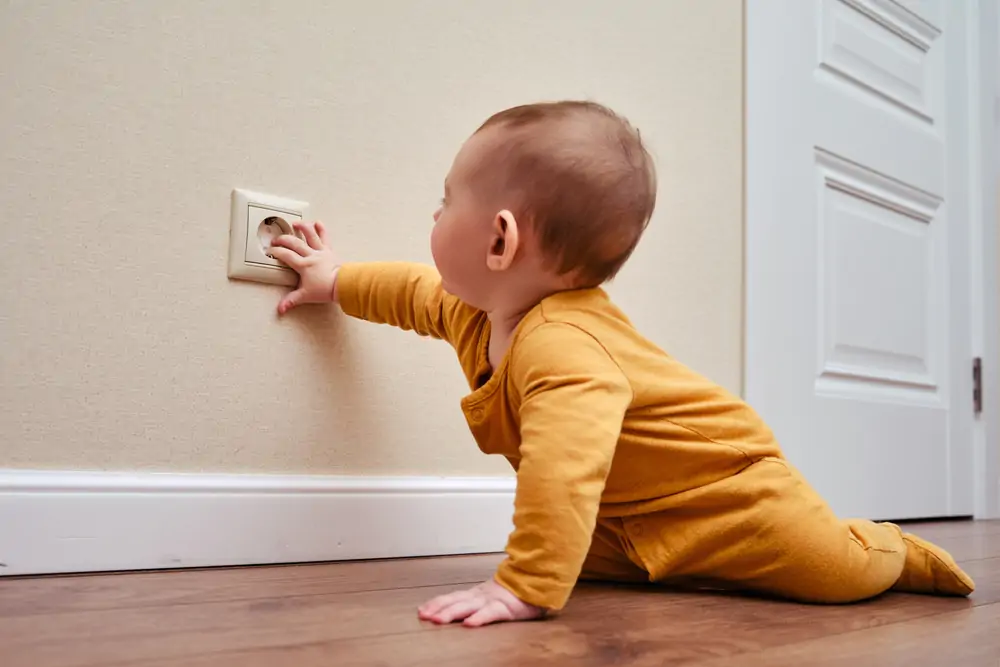
Kitchen
Locking Cabinets and Drawers
Kitchens are full of potential hazards, from sharp utensils to cleaning supplies. Use childproof locks on cabinets and drawers to keep dangerous items out of reach. Consider using magnetic locks, which are difficult for children to open but easy for adults.
Installing Stove Guards
Stoves and ovens pose a significant burn risk. Install stove guards to prevent your child from reaching the burners. Additionally, always use the back burners when cooking and turn pot handles inward to minimize the risk of accidental spills.
Keeping Hazardous Materials Out of Reach
Store all hazardous materials, including cleaning supplies, chemicals, and sharp objects, in high cabinets or locked storage. Even items like plastic bags can be dangerous, so ensure they are inaccessible to your baby.
Bathroom
Using Toilet Locks
Toilets can be a drowning hazard for young children. Install toilet locks to prevent your baby from opening the lid. Additionally, always supervise your child in the bathroom and never leave them unattended.
Installing Non-Slip Mats
The bathroom floor can be slippery, especially when wet. Use non-slip mats both inside and outside the bathtub to prevent falls. Ensure the mats are securely in place and replace them if they show signs of wear.
Securing Medicines and Cleaning Supplies
Medicines and cleaning supplies should always be stored in a locked cabinet, out of reach of children. Use childproof caps on all medication bottles and keep them in a high, secure location.
Bedroom
Ensuring a Safe Sleep Environment
Creating a safe sleep environment is crucial for your baby’s well-being. Use a firm mattress and ensure the crib meets current safety standards. Avoid using pillows, blankets, and stuffed animals in the crib, as they can pose a suffocation risk.
Securing Dressers and Furniture
Like in the living room, secure all heavy furniture in the bedroom to the wall. Ensure that dressers and bookshelves are stable and won’t tip over if your child climbs on them.
Using Baby Monitors
Baby monitors provide peace of mind by allowing you to keep an eye on your baby while they’re sleeping. Choose a monitor with clear audio and video capabilities, and place it at a safe distance from the crib to avoid any potential hazards.
Nursery
Crib Safety
Ensure the crib is safe by checking for proper assembly and stability. The crib slats should be no more than 2 3/8 inches apart to prevent your baby from getting stuck. Regularly check for loose screws or parts and keep the crib free from any objects.
Securing Changing Tables
Changing tables should be sturdy and have safety straps to secure your baby during diaper changes. Keep all necessary items within arm’s reach to avoid leaving your baby unattended, even for a moment.
Organizing Toys Safely
Toys should be age-appropriate and free from small parts that could be a choking hazard. Regularly inspect toys for damage and keep them organized in bins or shelves that your baby can’t easily access.
Stairways and Hallways
Installing Safety Gates
Safety gates are essential for preventing falls on stairs. Install gates at the top and bottom of stairways. Ensure the gates are securely mounted and choose models that your baby can’t easily open.
Removing Tripping Hazards
Keep hallways clear of clutter to prevent tripping. Secure loose rugs with non-slip pads and ensure that any cords or cables are safely tucked away.
Securing Railings and Banisters
Check railings and banisters for stability and ensure they are securely fastened. If there are wide gaps between the rails, consider installing a banister guard to prevent your baby from squeezing through.
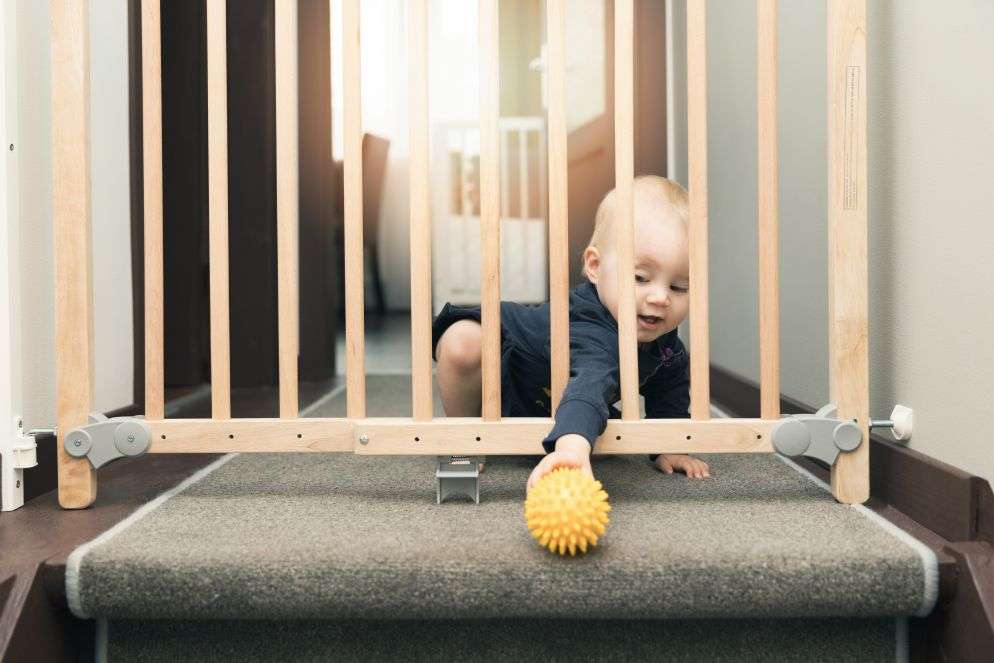
Specific Babyproofing Products and Tools
Outlet Covers and Plug Protectors
Outlet covers are a simple yet effective way to prevent electrical accidents. Choose covers that are difficult for children to remove but easy for adults to access when needed.
Cabinet and Drawer Locks
Cabinet and drawer locks come in various styles, including magnetic and adhesive locks. Select the type that best suits your needs and ensure they are installed correctly to keep hazardous items out of reach.
Corner and Edge Bumpers
Corner and edge bumpers soften sharp edges on furniture, reducing the risk of injuries from falls or bumps. Apply these bumpers to coffee tables, countertops, and other sharp corners.
Safety Gates
Safety gates are essential for blocking off dangerous areas like stairways and kitchens. Choose gates that are easy for adults to open but secure enough to keep children out.
Door Locks and Guards
Door locks and guards prevent children from accessing rooms or areas that haven’t been babyproofed. Install these devices on doors leading to basements, garages, and other potentially hazardous areas.
Baby Monitors
Baby monitors allow you to keep an eye on your child from another room. Choose a monitor with reliable audio and video capabilities, and place it at a safe distance from the crib.
Babyproofing Outdoor Spaces
Securing Pools and Water Areas
If you have a pool, it’s crucial to install a safety fence with a self-latching gate. Never leave your child unattended near water, and consider using pool alarms for added safety.
Ensuring Safe Play Areas
Create a safe play area in your yard by removing hazardous objects and installing soft ground coverings like grass or rubber mulch. Regularly inspect outdoor play equipment for damage and ensure it’s properly anchored.
Checking for Hazardous Plants
Some plants can be toxic if ingested. Identify and remove any hazardous plants from your yard. Educate yourself about which plants are safe and which ones to avoid.
Electrical and Fire Safety
Installing Smoke and Carbon Monoxide Detectors
Smoke and carbon monoxide detectors are essential for home safety. Install detectors on every level of your home and near sleeping areas. Test them regularly and replace batteries as needed.
Managing Electrical Cords and Devices
Keep electrical cords out of reach and secure them to prevent tripping. Use cord organizers to keep cables tidy and avoid overloading power outlets with too many devices.
Using Fireguards and Screens
If you have a fireplace, use a fireguard or screen to prevent burns. Ensure that the fireguard is securely in place and keep matches and lighters out of reach.
Preventing Choking and Suffocation
Safe Storage of Small Items
Small items like buttons, coins, and jewelry should be stored in containers with secure lids. Keep these containers out of reach and regularly check for any stray objects that could pose a choking hazard.
Using Proper Bedding and Sleepwear
Ensure your baby’s sleep environment is safe by using a fitted sheet on a firm mattress. Avoid using blankets, pillows, or stuffed animals in the crib. Dress your baby in appropriate sleepwear to keep them warm without additional bedding.
Monitoring Meal Times
During meal times, cut food into small, manageable pieces to prevent choking. Supervise your child while they’re eating and ensure they are seated upright. Avoid giving foods that are known choking hazards, such as whole grapes and nuts.
Dealing with Common Household Hazards
Chemicals and Cleaning Supplies
Store chemicals and cleaning supplies in a locked cabinet, out of reach of children. Use childproof caps on all containers and keep them in a high, secure location.
Sharp Objects and Tools
Keep sharp objects, such as knives and scissors, in drawers with childproof locks. Store tools and other hazardous items in a locked garage or shed, away from curious hands.
Heavy and Unstable Furniture
Secure heavy furniture to the wall to prevent tipping. Ensure that bookshelves, dressers, and other large items are stable and won’t fall over if your child climbs on them.
Creating a Safe Play Environment
Choosing Safe Toys
Select toys that are appropriate for your child’s age and development stage. Avoid toys with small parts that could be a choking hazard. Regularly inspect toys for damage and remove any broken or unsafe items.
Regularly Inspecting Play Areas
Check play areas for potential hazards, such as sharp objects or loose parts. Ensure that outdoor play equipment is properly anchored and in good condition.
Supervising Playtime
Always supervise your child during playtime to ensure their safety. Be attentive and ready to intervene if they encounter a hazard. Encourage safe play practices and teach your child about potential dangers.
Teaching Safety to Your Child
Introducing Safety Rules Early
Start teaching your child safety rules as soon as they begin to understand basic instructions. Explain the importance of these rules and consistently reinforce them.
Leading by Example
Children learn by observing their parents and caregivers. Model safe behaviors, such as wearing seat belts and using safety equipment, to teach your child the importance of safety.
Reinforcing Safe Behaviors
Praise your child when they follow safety rules and gently correct them when they don’t. Consistent reinforcement helps your child understand the importance of staying safe.
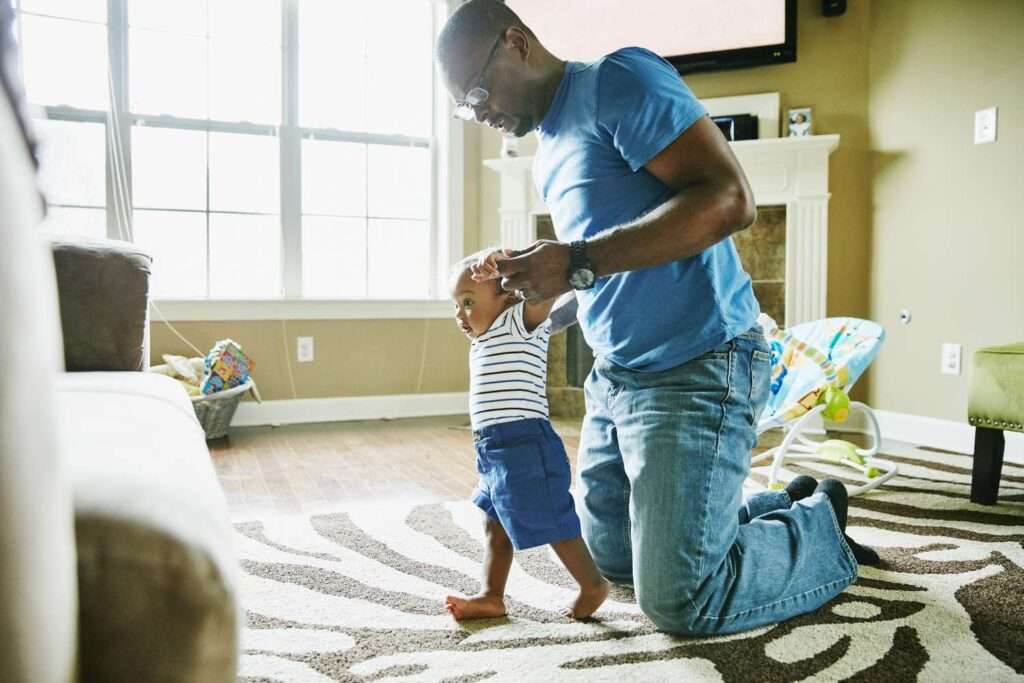
Maintaining Your Babyproofed Home
Regular Safety Checks
Conduct regular safety checks to ensure your babyproofing measures are still effective. As your child grows and becomes more mobile, adjust your safety precautions accordingly.
Updating Babyproofing Measures as Your Child Grows
As your child reaches new developmental milestones, reassess your babyproofing measures. What was safe for a crawling baby may not be sufficient for a walking toddler.
Staying Informed on Safety Recalls and Updates
Stay informed about safety recalls on baby products and toys. Sign up for recall alerts and regularly check for updates to ensure that all items in your home are safe.
Expert Advice on Babyproofing
Consulting Pediatricians and Safety Experts
Consult your pediatrician or a child safety expert for personalized advice on babyproofing your home. They can provide recommendations based on your specific situation and address any concerns you may have.
Utilizing Online Resources and Communities
There are numerous online resources and communities dedicated to child safety and babyproofing. Join forums and groups to share tips, ask questions, and learn from other parents’ experiences.
Considering Professional Babyproofing Services
If you’re unsure where to start or want a thorough assessment, consider hiring a professional babyproofing service. These experts can identify potential hazards and install safety devices to ensure your home is secure.
